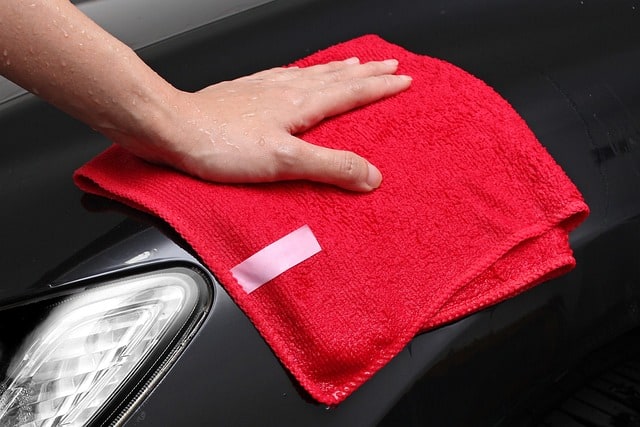Microfiber towels are a great cleaning tool because they are highly absorbent and can be washed and reused multiple times. They can help to trap dust due to their slight positive charge and are also known to be more absorbent than rags.
They can also be used repeatedly which means they need to be properly washed and cared for. What’s the best way to do this?
Here’s how to properly wash microfiber towels:
- Sort the towels by color and avoid washing them with lint-producing items such as cotton clothing.
- Use a mild detergent and avoid using fabric softener as it can clog the fibers in the microfiber and decrease its effectiveness. Also avoid using dryer sheets for the same reason.
- Wash the towels in warm water on a gentle cycle.
- Tumble dry on low heat or air dry.
- It’s best to avoid using bleach or chlorine on microfiber towels, as it can break down the fibers.
- Once dry, store them in a dry and well-ventilated place.
It is also important to note that towels with heavy soils or oil-based stains should be washed separately and with a more heavy duty detergent.
By following these steps, your microfiber towels will last longer and continue to be effective cleaning tools.
What can I use microfibers towels for?
Microfiber towels are versatile cleaning tools that can be used for a variety of tasks. Here are a few examples:
- Car detailing: Microfiber towels are great for cleaning and detailing cars, as they are highly absorbent and can be used to remove dirt, dust, and grime from the exterior and interior of a vehicle.
- Cleaning windows and mirrors: Microfiber towels are lint-free and can be used to clean windows and mirrors without leaving streaks.
- Dusting: Microfiber towels can be used to dust surfaces in the home, as they are able to trap and hold dust particles.
- Kitchen cleaning: Microfiber towels are great for cleaning kitchen counters, appliances, and other surfaces. They can be used to remove grease and grime without scratching surfaces.
- Bathroom cleaning: Microfiber towels are great for cleaning bathroom surfaces such as toilets, sinks, and shower stalls. They can be used to remove soap scum and hard water stains.
- Mopping: Microfiber mops are great for cleaning floors, they are more efficient than traditional mops, and they can hold more dirt, dust, and liquid.
- Personal hygiene: Microfiber towels can be used for personal hygiene such as drying hair, body and face.
Overall, microfiber towels are a versatile and cost-effective cleaning tool that can be used to clean a variety of surfaces in the home and on the go.
Are microfiber towels environmentally friendly?
Because microfiber towels can be used, washed and reused, it’s assumed that they must be environmentally friendly especially when compared to paper towels which are used once and thrown away.
But paper towels are at least biodegradable and can often be put in your local bio collection bin.
Microfiber towels are considered to be more environmentally friendly than traditional towels made from cotton or other natural fibers. They are made from synthetic materials, such as polyester and nylon, which are more durable and require less water and energy to produce. Additionally, microfiber towels can be washed and reused many times before needing to be replaced, which also helps to reduce their environmental impact.
However, it is important to note that microfiber towels can shed tiny fibers during washing which can contribute to microplastic pollution in our water ways.
Microfiber towels can contribute to microplastic pollution when they are washed. During the washing process, the fibers in the towel can break off and become so small that they can pass through water treatment facilities and end up in our rivers and oceans. These microplastics can be harmful to marine life and other organisms that live in water.
Additionally, Microfiber towels may also release microfiber into the air, which can be inhaled and potentially harmful to human health.
It is important to properly clean and care for microfiber towels to minimize the release of microplastics. This includes washing them in a washing bag, on a low spin cycle, and with a mild detergent.
Additionally, use of a Guppy Friend washing bag, or other similar products that are specifically designed to capture microfibers during washing, is recommended.
How long do microfiber towels last?
The lifespan of a microfiber towel can vary depending on the quality of the towel and how it is used and cared for. In general, high-quality microfiber towels can last for several years with proper care and cleaning. They can be washed and reused many times before showing signs of wear and tear.
However, If the microfiber towel is used frequently, it may need to be replaced sooner. The towel may show signs of wear and tear, such as fraying or pilling, or it may lose its absorbency over time. On the other hand, if the towel is used infrequently and properly cared for, it may last longer. It’s important to follow the manufacturer’s instructions for cleaning and care to extend the life of the towel.


